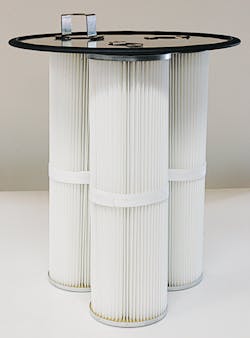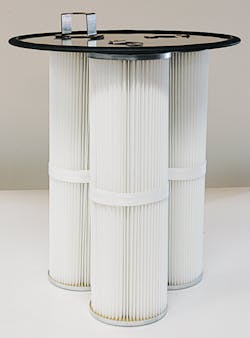Special Report: Considerations for flakes, powders
Novatec's Jim Zinski says that anyone who wants to convey flaky or powdery materials — and even very dusty regrinds — should think twice and ask some pertinent questions. For example: What is the material? How fine is the powder? What is the material's angle of repose?
If the powdery material contains no more than 20 percent extra-fine materials such as carbon black, titanium dioxide or calcium carbonate, it usually can be transferred by powder vacuum loaders or powder vacuum receivers with proper internal filters and blowback to minimize filter clogging. In such situations, Novatec uses one to three washable, polytetrafluoroethylene, 1-micron filters in each loader or receiver in conjunction with a powerful blowback system for optimal operation. Powders containing more than 20 percent of these extra-fine materials usually have to be conveyed by a pneumatic pressure system.
Flaky materials pose a different set of challenges. Angle of repose is very important, says Zinski, because if it is very steep, the material height in a vacuum loader or receiver may falsely indicate that the vessel is full and stop loading prematurely. Likewise, when a material with a steep angle of repose empties from the center of the loader or receiver, a level sensor may indicate that the vessel is nearly full when, in fact, it is nearly empty. Bridging of material is also possible. These issues can also occur in silos. A large dump throat and/or external vibrator may be required for loaders and receivers. In the case of silos, internal rotating paddles or augers may also be employed.
See main story in Conveying Special Report here
Contact:
Novatec Inc., 410-789-4811, www.novatec.com

